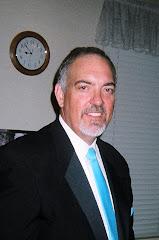Previously I have written about the importance of leaders listening to organizational members, to be open to them, as a way to build an excellent organization. Today I would like to discuss this issue of openness.
In many ways, a synonym for excellent organization is learning organization. This term was made famous by Peter Senge. In his book, The Fifth Discipline, Senge states there are two types of organizational openness: participative and reflective. Participative openness exists when organizational members have the freedom to express themselves. Reflective openness occurs when organizational members allow themselves to hear and understand what others are saying. Participatory openness is necessary but insufficient in the creation of excellent organizations. Both types of openness are required for organizational excellence.
Too often, organizations espouse openness and pride themselves on having everyone speak their mind. “Enlightened” managers have learned that encouraging participation increases commitment, creativity, and hard work. So, given that, they ensure that everyone has the opportunity to speak in meetings before decisions are made. They may even pride themselves on drawing out those who are reticent to participate in group settings. The real question is, is anyone listening?
I know a manager that depicts this perfectly. Mary (not the real name) prides herself on being a participative manager. She would never make a decision without including her management team in a discussion. The problem, however, is she enters those discussions with her desired outcome firmly in mind and doesn’t allow anything to deflect her from that goal. If you were to observe her and her team in action, you might be impressed by the energy; you might notice that everyone speaks, or if they don’t that Mary asks his or her thoughts; and you might be impressed with the quality of the debate. Debate is the right word; Mary takes great pride in being able to convince people of the correctness of her ideas; she (and her reports for that matter) listens for openings where they can make their points and weaknesses in the statements of others that they can jump on. Clearly there is participative openness but there is no reflective openness; no one learning anything -- except how to argue.
So how might the scene be different if Mary’s organization had both participative and reflective openness? Mary might present the topic in the same way. After that, the dynamic would be dramatically different. Rather than engaging each other in a confrontational way, each team member would be listening to understand the spoken and unspoken assumptions held by the others. Further, everyone, including and perhaps especially Mary, would be willing to suspend their own assumptions. This does not mean they would deny, suppress, or ignore their own assumptions or experiences. On the contrary, they would willingly share their assumptions and invite others to ask questions that they might fully understand one another.
As each person listened to the opinions of the others, understanding their assumptions and experiences that led to those assumptions, and as they clearly presented their own point of view and the reasons for it, very possibly a synthesis of their ideas would occur and perhaps a course of action different from that anyone might have developed on his or her own would be adopted. It is also possible the team will end up with the outcome Mary favored from the beginning. However, if that did happen, there would be greater commitment to its accomplishment; organizational energy is more likely to fully focused on the jointly defined goal.
To a great extent, the difference between the two scenes is the difference between discussion and dialogue. Discussion came into English from Latin and had an original meaning of dash or shake apart. This original meaning carries forward to the implication in the current usage of using argument or debate to elicit the truth or to establish a point. It is related to words such as percussion and concussion. The image of discussion is two people firing verbal canon back and forth until one’s opponent is beat into submission.
On the other hand, dialogue, entering English from the Greek dialogous, or “meaning passing or moving through”; now denotes conversation between two or more people. The mental image is of two people reaching an understanding through the flow of ideas. The purpose of dialogue is not to “win” but for expand knowledge and understanding of truth for all involved.
While discussion satisfies our competitive nature, dialogue is more likely to lead to the development of new understanding and better decisions. I think it is clear which method will most likely help organizations achieve excellence. Therefore the skills of both participatory and reflective openness need to be developed. Are you open to that possibility?
Farewell to Twitter
7 months ago




